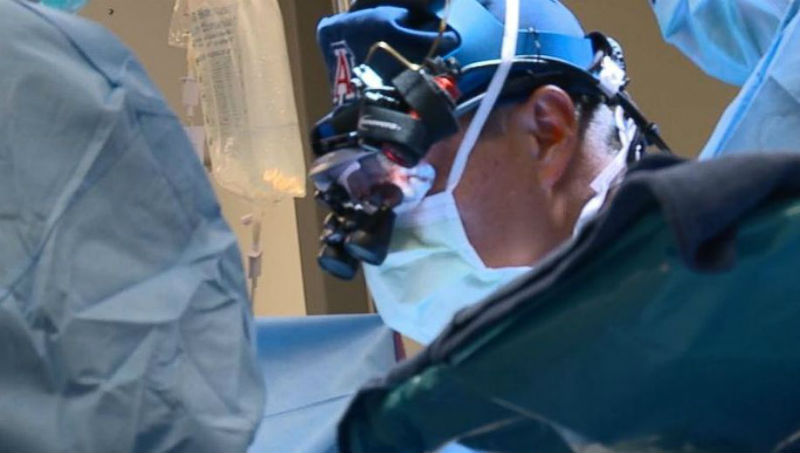
Sports hernia surgery, for many people, is the only option to treat and cure the debilitating groin pain associated with the injury.
Get the ULTIMATE Sports Hernia Master Guide with 30+ included resources, an in-depth rehabilitation program, tips, tricks, and more! Successfully diagnose, treat, and cure your sports hernia with this complete master guide created by a sports hernia specialist. Note that it is still highly recommended to read this article in full to understand how to get the most out of the guide to treat and cure your sports hernia or groin pain.
Once you confirm your symptoms (and make sure they are distinct from normal groin pain symptoms) and receive a proper diagnosis, you should immediately begin the 3-point sports hernia treatment plan. Covered extensively in the sports hernia mega-post, some individuals are able to successfully treat it without surgery. However, the ability to do so relies on 3 distinct factors:
- Your general fitness level—higher is obviously better and will improve your ability to recover significantly
- The time between your diagnosis and beginning treatment (the longer you wait, the more your chance lessens)
- Consistency during rehabilitation—not missing any physical therapy sessions
Lastly, as discussed in scientific literature, you must follow a holistic physical therapy approach that focuses on restoring strength and mobility to the entire core area—not just your abdominal muscles.
However, if you find that sports hernia surgery is your only option—you are not alone.
If you had the injury twenty years ago, you would be largely out of luck. From a time standpoint, the injury is very new to the medical community and was only first referenced in scientific review journals in the 1980s.
Luckily though, since then knowledge on how the injury forms has grown tremendously. This has allowed doctors to gain a firm understanding of how to actually treat and cure the problem.
The Wrong Sports Hernia Surgery to Get: Mesh
Originally, if you were going in for a sports hernia surgery, you would receive a piece of mesh placed in your groin area. This is because the much simpler direct inguinal hernia (that produces a visible bulge) is well treated with mesh.
Because of this, during initial operations doctors relied on the same line of thought. Unfortunately, it doesn’t work nearly as well for a sports hernia and can lead to a host of complications.
The list of problems is something to be aware of if you only have the option of choosing this style of operation:
- Mesh can fuse to nerve endings, causing life-long groin pain that becomes untreatable unless it is removed and the alternative procedure is performed
- It can harden over time due to fibrosis—the scarring of your connective tissues becomes thicker
- It can cause nerve entrapments of the genital branch of the genitofemoral nerve which runs along your psoas major muscle
- It can lead to infections when your body does not accept the foreign material
- It can migrate after your operation, and in rare cases lead to puncturing of the internal organs
- Outlined in the list of male sports hernia symptoms, it can also lower testicular temperature
If you are highly active or play sports, mesh can also limit elasticity in your groin area—decreasing your mobility and overall athleticism.
If you want further proof, check out this horror story of a soccer player whose life was ruined by it.
The Best Sports Hernia Surgery Type: Minimal Repair Technique
After roughly two decades of surgeons performing the procedure in this fashion, a doctor in Germany—Dr. Ulrike Muschaweck, head of the Munich Hernia Center—developed an innovative new approach to cure the terrible groin pain: the minimal repair technique.
In a single-center uncontrolled clinical review published in the SAGE Sports Health Journal, Dr. Muschaweck and her colleagues found that using the minimal repair technique led to several advantages over mesh:
- No general anesthesia was required, avoiding the associated risks—the use of local anesthesia has been shown to have advantages in the case of groin hernia repair
- Lower chance for serious complications during and after the procedure
- Faster recovery times
As mentioned above, it also avoids stiffening mesh which can restrict movement of the abdominal muscles and cause athletic pubalgia abdominal pain. If you are a competitive athlete or someone who maintains a high level of fitness, it is worth stating twice—avoid mesh or expect a loss of movement while performing recreational and competitive activities.
Some quick stats give a picture into the recovery timelines of those who chose this style of operation:
- 9% of patients who underwent the tension-free minimal repair approach reported that they were pain free within 14 days
- 8% of patients returned to pre-injury sports activity levels after 19 days
Most notably, all patients agreed that the sports hernia surgery was a success and improved their pain symptoms dramatically.
What about the long-term success rates though?
In a review of over 2,000 sports hernia surgery cases, researchers found that only 3 people were unable to permanently resolve their pain completely. To put that into perspective, it is a 99.9% success rate.
While going under the knife is a tough decision to make, you can remain confident with the peace of mind that your chances of full pain relief are very high.
The costs will vary depending on which type you get though, so make sure you know the price differences.
Once you find a surgeon and go through with the operation, make sure you begin the rehabilitation program starting on day 1 when you get back from the hospital.
